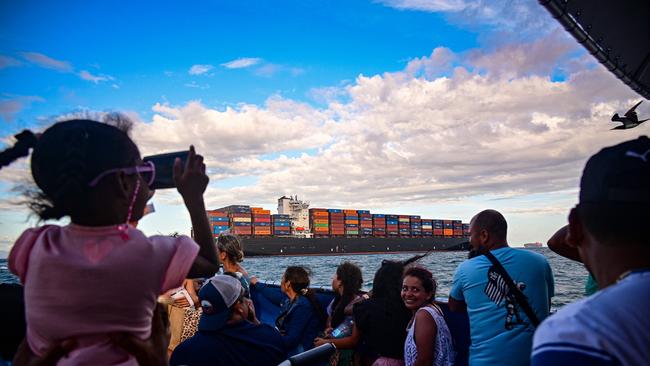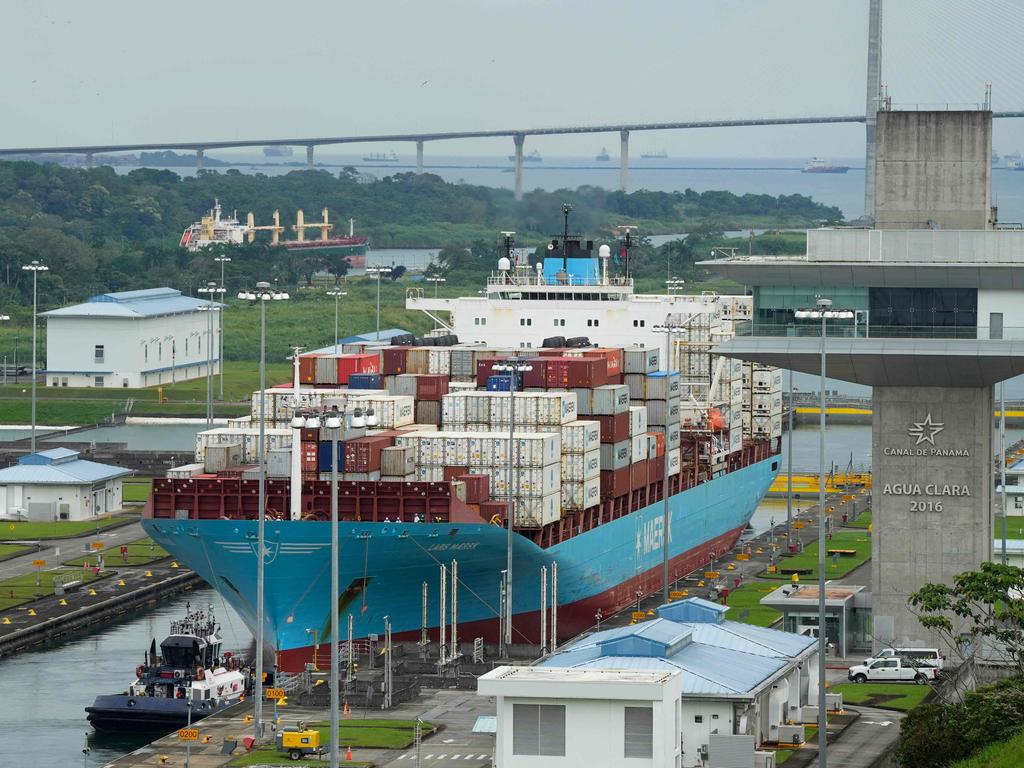Trump right to voice concern on Panama Canal

Built by the United States in 1904 to connect the Atlantic and Pacific Oceans, the 82km Panama Canal now handles around 6 per cent of global trade and 40 per cent of US container trade, underscoring its importance to both American interests and the global economy.
As a nation heavily reliant on seaborne trade, Australia is particularly vulnerable to disruptions in global shipping routes. Consequently, even though only a small portion of its maritime trade travels through the Panama Canal, further disruptions to the Panama Canal would have an impact on the price of goods in Australia as the global supply chain would have to respond to the constriction of another key waterway.
The Reserve Bank in its August 2024 report on monetary policy noted the maritime trade freight costs had risen sharply in 2024 – this is predominantly as a result conflict in the Red Sea and a reduction in capacity of the Panama Canal due to drought.
While the Reserve Bank stated that increased freight costs haven’t translated into higher goods inflation in Australia, if sustained, it could – demonstrating the impact to disruption of maritime trade on Australia’s economy. So, what exactly are Trump’s proclamations?
He has threatened to seize back the Panama Canal – by force if necessary – claiming it’s under the control of Chinese soldiers and that Panama is gouging US ships with exorbitant transit fees.
While his claims are demonstrably false, his underlying concern is not misplaced. Maritime infrastructure is crucial to the economic and national security of countries such as Australia and the US. Australia learned this lesson too late in 2015 when it rashly leased the Port of Darwin to Landbridge, a Chinese-owned company, for 99 years. Much as Darwin is vital to Australia’s security, the Panama Canal remains critical to America’s.
The Panama Canal has been fully owned by the Republic of Panama since 1999, when the US transferred control under two treaties, one of which was a treaty of neutrality, requiring the canal to remain in neutral hands – stating that if it did not, the US reserved the right to defend the canal with military force.
Despite the canal being under Panamanian control, companies from China and Hong Kong have acquired key port facilities on both its Pacific and Atlantic entrances. On the Atlantic side, China-based Landbridge Group, the firm that leased Australia’s Darwin Port, took control of Margarita Island, Panama’s largest port. Meanwhile, Hong Kong-owned CK Hutchison Holdings – which wholly owns Hutchison Ports Australia, operator of terminals in Sydney and Brisbane – holds concessions to operate the ports of Balboa and Cristobal, the canal’s major Pacific and Atlantic gateways.
While CK Hutchison Holdings is Hong Kong-owned, the national security laws that were introduced in Hong Kong in 2020 could allow China to exercise influence over these ports.
China’s national security laws can require companies, including Hong Kong companies, to assist the Chinese government in intelligence gathering and military operations.
This means that even though China does not directly control the Panama Canal, it still holds significant sway at both its Pacific and Atlantic entrances. Coupled with a major uptick in Chinese investment in Panama – underscored by Panama’s decision to join China’s Belt and Road Initiative in 2018 – this port ownership provides China with a strategic foothold in the region, and specifically at either end of the canal.
This is part of a broader trend of Chinese investment in maritime trade routes, including in the Indian Ocean – think Bangladesh, Sri Lanka, and Pakistan, to name a few. This foothold grants China significant influence over the Strait of Malacca, the Strait of Hormuz, and other vital shipping lanes in the region. China has poured resources into Pacific ports, such as those in the Solomon Islands.
The point is that China is investing heavily in infrastructure that underpins global maritime trade. Under its national security laws, the companies driving these investments – some of which are state owned or have close ties to the Communist Party – could be compelled to use them for intelligence gathering or even military purposes. In the event of heightened strategic competition or conflict, these investments would allow for the targeted constriction of maritime trade to countries such as the US and Australia.
Despite Trump’s threats, it’s unlikely the US would opt to take the canal by force. But Australia should take notice. While Trump’s claims of Chinese soldiers controlling the Panama Canal are false, the concern over China’s increased control of port infrastructure globally, including at each end of the canal, should generate concern for a maritime trading nation such as Australia.
Jennifer Parker is an expert associate at the National Security College, Australian National University.





Donald Trump’s foreign policy priorities are coming into sharp focus: shoring up economic security, bolstering national security, and sending a clear signal to America’s allies and partners. One of those partners is Panama, a small Central American nation that happens to control one of the world’s most vital maritime passages. Of the many Trump proclamations this week, this is one that Australia, as a maritime nation, should pay attention too.